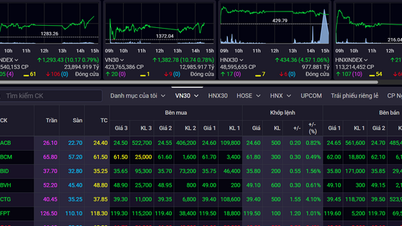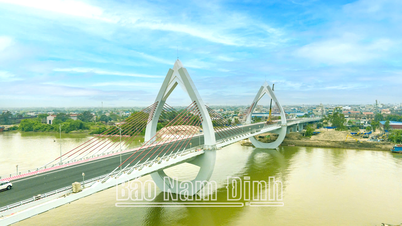This is an activity towards the 60th anniversary of the Traditional Day of the Vietnam Maritime Industry (May 5, 1965 - May 5, 2025).

The online exhibition “Ancient Ports: From Indochina to the World ” introduces about 200 unique documents and images about the planning process of seaports, lighthouses as well as maritime transport activities in Indochina in the late 19th and early 20th centuries, many of which are published for the first time.
The exhibition has 3 parts: Part 1 "Seaport - Gateway for trade and penetration"; Part 2 "Lighthouse - Divine eye of the sea"; Part 3 "Maritime transport - Connecting horizons".
In the elaborately designed sea and island space, the exhibition takes viewers to many locations in the three regions of the North, Central and South to look back at the development process of international gateways at sea as well as the history of the "eyes" of the blue ocean.
According to information from the Organizing Committee, seaports are not only important trading gateways. Historically, great powers have also taken advantage of the strategic location of seaports as a springboard for colonial invasion. Before the 19th century, foreign merchants frequented Vietnam's seaports to conduct trade and explore the domestic situation. This was also where foreign missionaries landed before penetrating the interior to spread religion, paving the way for Western countries to intervene in Vietnam.

After invading our country, the French had the ambition to build a series of seaports along the East coast such as Saigon, Da Nang , Hai Phong, Hon Gai-Cam Pha, Ben Thuy, Quy Nhon, Nha Trang, Cam Ranh, Ha Tien... At the same time, the system of documents serving the management and operation of seaports was also gradually completed.
Along with the port network, lighthouses play a key role in helping offshore ships navigate, signal navigation, and indicate the location of dangerous underwater obstacles...
The Royal Records show that the Nguyen Dynasty paid attention to the construction and renovation of lighthouses to serve the activities of ships. During the French period, a series of lighthouses were built, contributing to the development of maritime infrastructure, thereby creating favorable conditions for colonial exploitation.

The completion of infrastructure including a system of seaports and lighthouses linked to the road and railway systems has strongly promoted maritime transport activities in Indochina.
Major French shipping companies, especially the Messageries Maritimes and Chargeur Réunis, flourished during this period thanks to contracts for the transport of people and goods between Indochina and the motherland as well as to other countries and territories.
Source: https://hanoimoi.vn/kham-pha-lich-su-hang-hai-viet-nam-qua-trien-lam-truc-tuyen-hai-cang-xua-699013.html



![[Photo] Many young people patiently lined up under the hot sun to receive a special supplement from Nhan Dan Newspaper.](https://vphoto.vietnam.vn/thumb/1200x675/vietnam/resource/IMAGE/2025/5/18/6f19d322f9364f0ebb6fbfe9377842d3)


![[Photo] Ready for the top competitions of Vietnamese table tennis](https://vphoto.vietnam.vn/thumb/1200x675/vietnam/resource/IMAGE/2025/5/18/9c547c497c5a4ade8f98c8e7d44f5a41)








![[Podcast] - War Scars](https://vphoto.vietnam.vn/thumb/402x226/vietnam/resource/IMAGE/2025/5/18/9a131452559b41c9be4dc3798d0a4da0)











![[Photo] National conference to disseminate and implement Resolution No. 66-NQ/TW and Resolution No. 68-NQ/TW of the Politburo](https://vphoto.vietnam.vn/thumb/1200x675/vietnam/resource/IMAGE/2025/5/18/adf666b9303a4213998b395b05234b6a)
![[Photo] General Secretary To Lam visits exhibition of achievements in private economic development](https://vphoto.vietnam.vn/thumb/1200x675/vietnam/resource/IMAGE/2025/5/18/1809dc545f214a86911fe2d2d0fde2e8)





























































Comment (0)